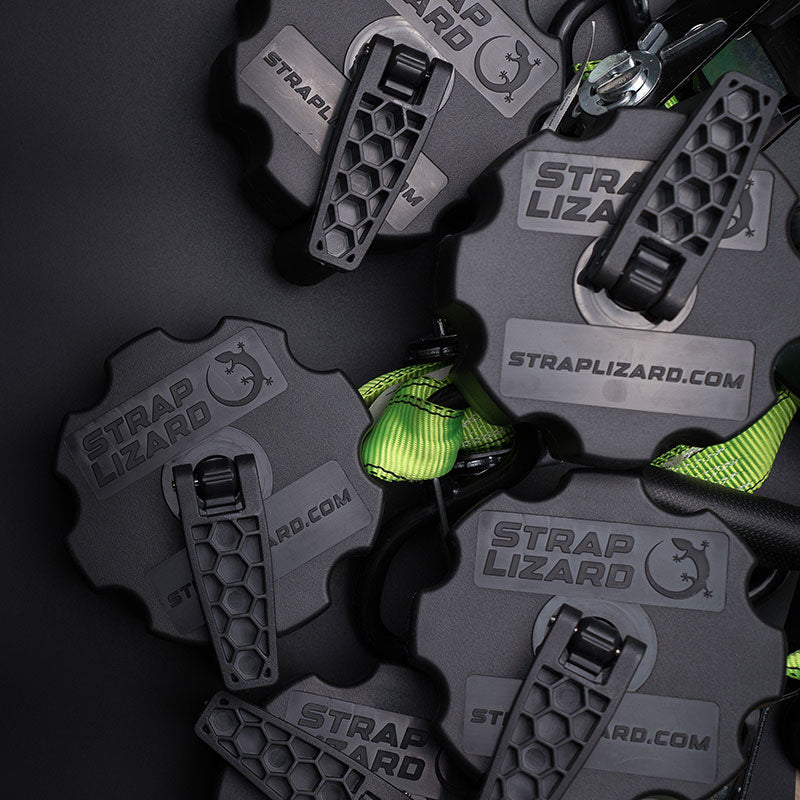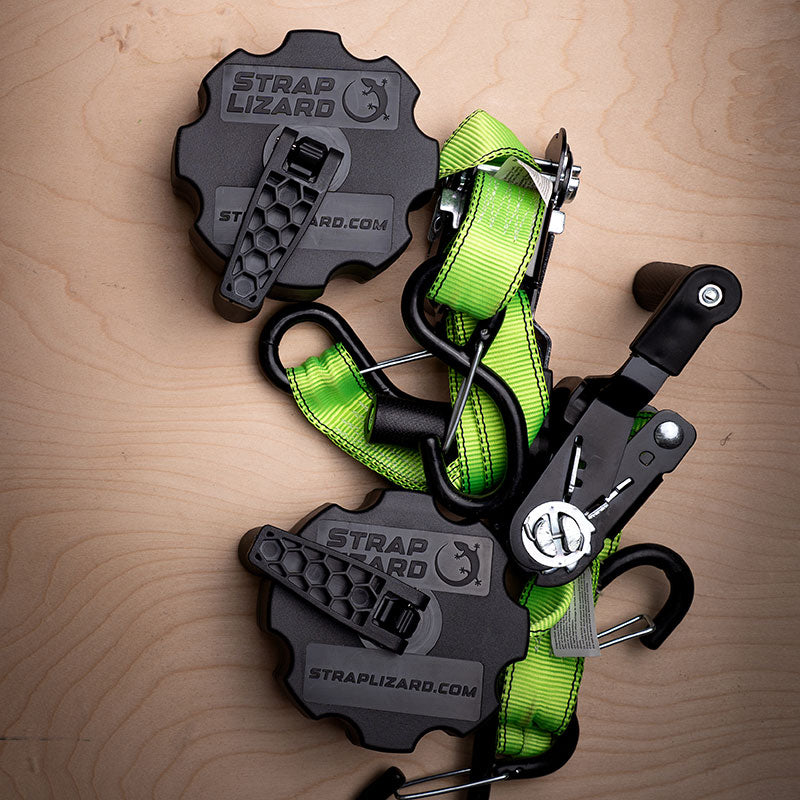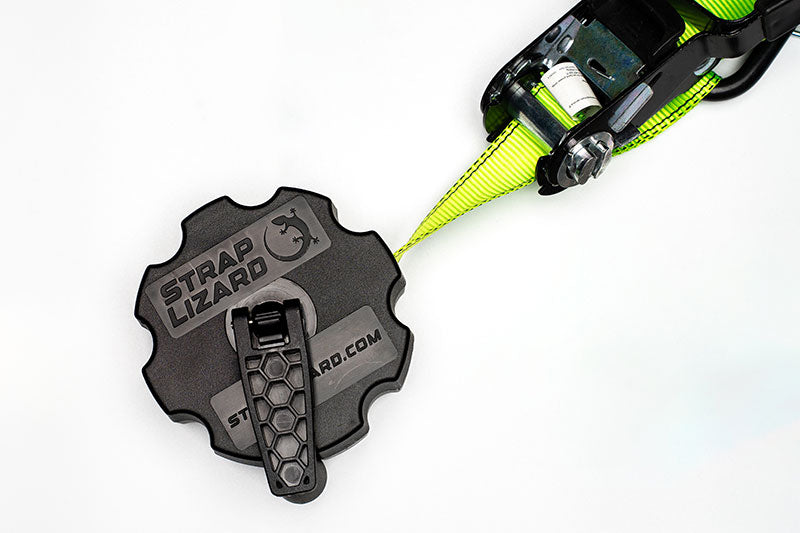9 Worst Ratchet Strap Mistakes
Unless you haul for a living, you likely don't use ratchet straps every day. But that doesn't mean the average person won't ever need to strap something down. Maybe your DIY project requires you to haul some lumber from the big box store, or maybe you're renting some kayaks for a camping excursion. Whatever the reason, it's important to follow best practices when strapping down any load as any mistake has the potential to cause a serious mess. Here are some common mistakes to avoid when strapping down your precious cargo.

1. Choosing the Wrong Strap
Each ratchet strap has a load capacity rating. Make sure the straps you're using fit the requirements of your load. Straps should be rated above the capacity required to hold the load. Also consider whether a strap is the right tool for the job, or if some kind of mesh netting or chain would be more appropriate.
2. Threading the Strap Incorrectly
Make sure the loose strap end is properly threaded through the ratchet mechanism. The consequences for doing it incorrectly range from a pinched finger to your load scattered all over the highway. Check out our video here to see how to property thread a ratchet strap.

3. Ratcheting Too Much Strap
When tightening a strap onto a load, make sure you manually pull as much tension into the strap as you can by pulling the excess strap through the ratchet before you begin ratcheting. This way, the ratcheting will exert the final tension required to keep the load secure without winding excess strap onto the ratchet making it 10x more difficult to remove later on. Too much strap wound on the ratchet could jam the ratchet completely. See this video for a tip on getting a jammed ratchet loose.
4. Strapping at Too Shallow an Angle
Make sure you bring your straps to around a 45 degree angle away from your load to the connection. The downward pressure on the load increases as the angle increases. If your strap looks almost horizontal across the load, the pressure holding the load in place would be way too low risking your load slipping and sliding all over the place. This is an easy mistake to make when hauling flat goods like a few sheets of plywood or water toys like paddle boards or kayaks. In these cases, using a scrap block of wood or looping the strap through a handle should solve the issue.
5. Strapping Around Sharp Edges
Watch out for sharp edges when tensioning your straps. Both the truck bed, trailer, or the load itself could have protruding sharp edges that could break the strap during transit. Even if you do not lay the strap directly onto a sharp area, make sure there aren't any sharp edges in the vicinity as a shift in the load could move the strap.
6. Incorrectly Securing Cardboard Boxes or Light Loads
Be careful while strapping cardboard boxes as they are not a rigid load and could begin to collapse under heavy tension. As the cardboard box collapses, the strap could lose tension or fall off completely. Same goes for a lighter load especially if it is narrow with a higher center of gravity. Too much tension directly over the top of this type of load could lead to the bottom shifting and kicking out leaving the straps completely loose. Using mesh or webbing straps would solve these issues as they would increase overall surface coverage of your loads.

7. Leaving Strap Ends Dangling
Dangling strap ends can be dangerous as the can flail and hit passing traffic or get caught in your wheels. Other nuisances include dangling straps shredding in the wind or getting dirty or wet on the ground. There are tie-methods out there that are well known among hauling and construction professionals. While most knots are fairly fool-proof, there is always the possibility the knot could come loose under certain conditions. To avoid these issues, or for the casual hauler, Strap Lizard is an excellent solution.
8. Leaving Your Load Unbalanced
More weight on one side over another could spell disaster for your load by putting too much weight on just one ratchet strap. Always make sure the load weight is evenly distributed on whatever surface you have it riding on.
9. Assuming "Everything's Fine Back There"

We like to think we would never make a mistake, but it only takes one time to have a potentially serious accident involving more precious cargo than just the stuff you're hauling. Make sure you are periodically stopping to check on your load, especially on longer trips. No one should be too proud to stop on the side of the road every once in a while to make sure everything's good if it could potentially save you and others from a serious accident.




